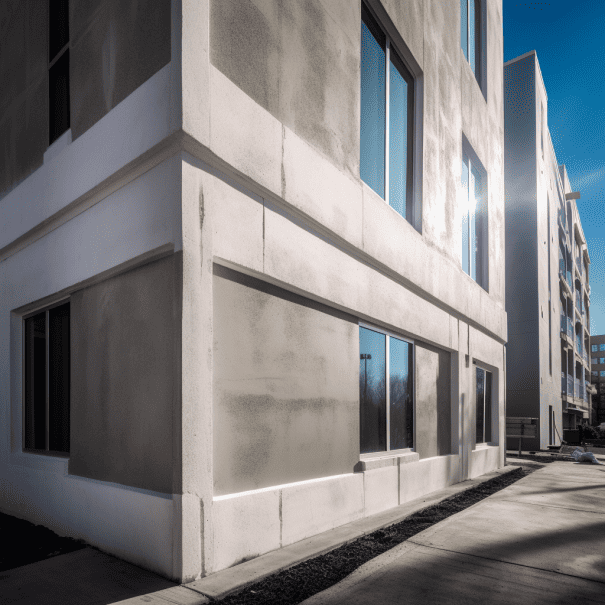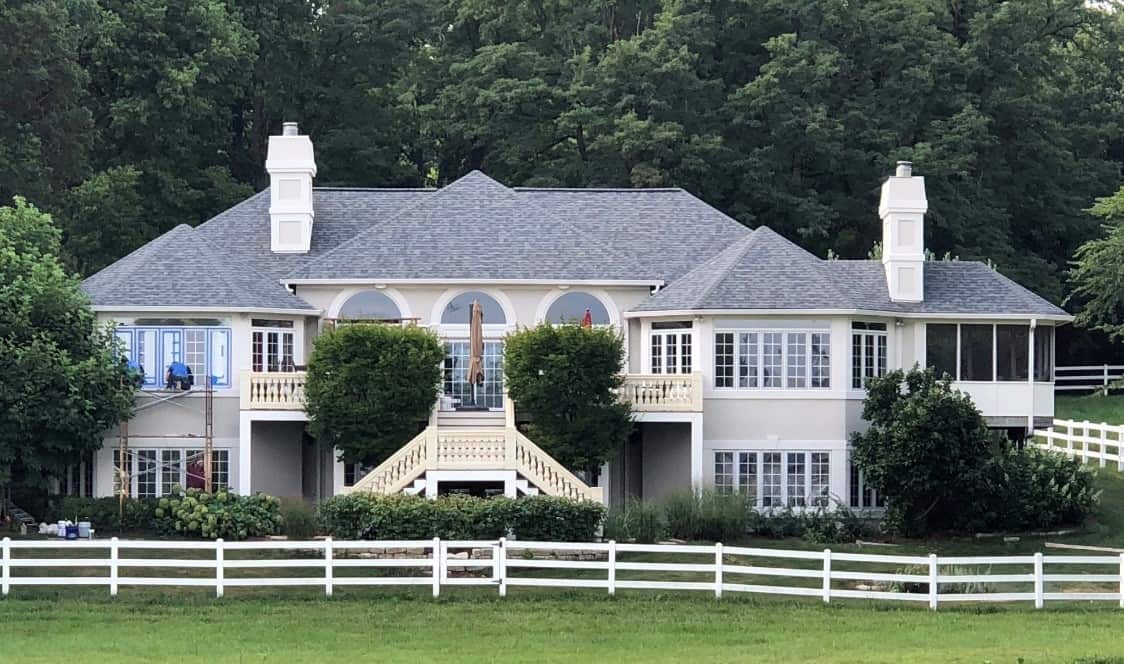EIFS vs. Stucco: Key Differences Between These Two Popular Cladding Systems
Exterior insulation and finish systems (EIFS) and traditional stucco are two of the most common cladding options used on residential and commercial buildings today. But what exactly sets these two systems apart? In this comprehensive guide, we’ll explain the key differences between EIFS and stucco so you can determine which is best for your next siding project.
EIFS and traditional stucco may appear similar at first glance, but they have some notable differences when it comes to materials, installation, cost, maintenance and performance. We’ll cover all the details you need to know to make an informed decision between EIFS or stucco for your home or commercial building. Continue reading this post to discover the key benefits and drawbacks of both EIFS and traditional stucco systems
What is Traditional Stucco?
Traditional stucco, sometimes called cement stucco, is a cement-based cladding material made from a mixture of sand, lime, water and Portland cement. It’s applied wet over a wire lath or metal mesh secured to the exterior wall surface (known as the substrate).
Traditional stucco is installed through a three-layer application process. First a scratch coat is applied to the lath, followed by a brown coat, and then finally a decorative finish coat is added as the exterior surface layer. The first two layers provide structure and strength, while the finish coat creates the decorative textured appearance.
Traditional stucco has been used for centuries across Europe, South America and North America. It remains popular today for its classic, Old World aesthetic, durability, and fire resistance.
What is EIFS?
EIFS stands for “exterior insulation and finish system.” It was introduced in the U.S. in the late 1960s but became more popular in the 1980s and 90s.
EIFS is a multi-layered synthetic cladding system made up of:
- Insulation boards bonded to the substrate
- Base coat with embedded fiberglass mesh
- Primer coat
- Acrylic finish coat
The insulation boards provide an added barrier against heat flow, boosting the structure’s energy efficiency. The reinforced base coat and acrylic/elastomeric finish coat create a water-resistant facade that stands up to weathering.
EIFS is sometimes called “synthetic stucco” but this is misleading — it has different components and properties than traditional stucco.
EIFS refers to a layered synthetic stucco system comprised of foam insulation boards, fiberglass mesh, an acrylic base coat, and a finish coat. Newer EIFS products incorporate engineered drainage systems and water-resistant barriers and components to effectively manage moisture. This includes a fluid-applied or bonded water-resistive barrier along with a drainage mat or channels that direct water away from the wall cavity. These innovations provide enhanced protection compared to older EIFS designs.
Main Differences Between EIFS and Traditional Stucco
Now let’s explore the key differences between these two exterior cladding systems:
Materials Used
The main ingredients in traditional stucco are sand, lime, cement and water. EIFS uses foam insulation boards, fiberglass mesh, acrylic polymers and elastomeric finishes.
EIFS has a synthetic makeup of both organic and inorganic materials. The foam boards contain plastic polymers while the finishes use acrylics. Traditional stucco relies entirely on natural inorganic materials.
Layers and Structure
As described above, traditional stucco consists of 3 coats over wire lath. EIFS involves layers of insulation, base coat, reinforcing mesh, primer and finish coat.
With EIFS, the insulation provides a protective thermal barrier lacking in traditional stucco. The mesh embedded in the base coat also gives EIFS impact resistance.
Installation and Curing
Installing traditional stucco is labor-intensive, requiring high skill levels. The multiple coats are all applied wet and must cure over days or weeks.
EIFS installation doesn’t require specialized trade skills. The foam boards are adhered in place with adhesive, then the reinforced base coat and finish coats are rolled or troweled on. Drying times between coats are shorter too.
Cost Differences
EIFS generally costs $6-9 per square foot installed. This price includes materials, labor, and accessories to complete the siding application.
Traditional stucco runs $9-15 per square foot installed on average. The extensive hand-application process makes stucco cost more in labor compared to EIFS.
Durability and Longevity
When properly installed, EIFS can last 30 years or longer. The acrylic/polymer finish coat provides excellent protection from weathering, retaining its color and appearance with minimal maintenance required.
Traditional stucco also has a long lifespan of over 30 years when installed correctly. The cement-based material stands up well to sun, rain, snow and wind exposure without much degradation. However, cracks are more common over time.
Moisture Resistance
EIFS is vulnerable to moisture damage if water infiltrates behind the system. It relies on the integrity of the barrier coat and proper sealing for waterproofing. If penetrated, damage can occur to the wall structure.
Traditional stucco can withstand more moisture thanks to its breathable design. The scratch, brown and finish coats allow interior water vapor to escape. Any water that gets through the outer layer can also drain out through the porous stucco layers.
Thermal Performance
EIFS offers a higher R-value and greater insulating performance than traditional stucco. Typical EIFS provides an R-value of R-3.5 to R-6.5 per inch. This boosts energy efficiency and indoor comfort levels.
Traditional stucco has an R-value of about R-0.5 per inch. It lacks insulation, so stucco walls lose more heating/cooling energy. An insulated backing can improve its thermal resistance.
Fire Resistance
EIFS is combustible and will burn under high heat exposure. It’s typically rated Class C for fire performance.
Traditional concrete-based stucco is non-combustible and achieves Class A fire resistance. This makes it more suitable for commercial structures requiring higher fire safety.
Crack Resistance
EIFS rarely shows cracking since the elastomeric acrylic finishes have flexibility to move with the substrate. Hairline fractures can form but are less visible than with stucco. The mesh reinforcement also helps prevent large jagged cracks from developing.
Traditional stucco is prone to cracking over time as the walls shift or settle. Temperature changes and shrinkage as it cures also cause stress cracks. Minor cracks can be patched but wide ones may require stucco replacement.
Maintenance and Repair
Minimal maintenance is required for EIFS surfaces. Its durable finish coat retains its look for years with occasional cleaning. Any damage can be patched by smoothing on additional base coat and finish.
Traditional stucco needs periodic inspection, patching and replacement of cracked sections. sealants and paints also require renewal every 7-10 years. Stucco walls may need full recoating every 20-30 years.
Appearance Variety
EIFS relies mostly on its acrylic coating for aesthetics. This allows a wide range of colors but fewer textural options compared to stucco.
Traditional stucco offers great versatility in textures and patterns. Skilled applicators can create any desired look – smooth, splatter, Spanish lace, etc. Its cement-based composition allows more decorative variety.
Key Takeaways on EIFS vs Stucco
- EIFS is a multi-layer synthetic cladding with insulation, while traditional stucco uses cement, lime and sand over wire lath.
- EIFS costs less installed but stucco offers greater design flexibility and moisture resistance.
- EIFS provides higher insulation value and efficiency than stucco alone.
- Stucco requires more maintenance and repairs but provides fire safety that EIFS lacks.
- EIFS takes less time and skill to install than traditional hand-troweled stucco applications.
- Both claddings have long lifespans of 30+ years if properly installed and maintained.
We hope this overview has helped explain the primary differences between EIFS and stucco siding. Indiana Wall Systems offers top-quality EIFS and traditional stucco installation. Contact us today for a quote on your residential or commercial project!


